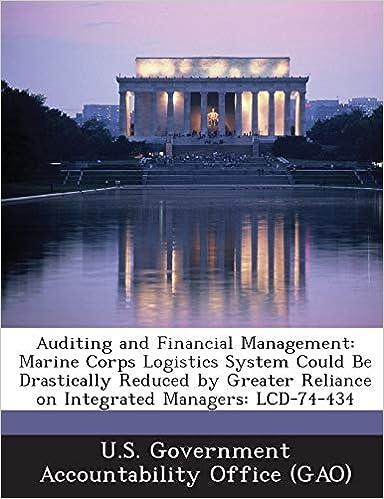Each budget scenario should contain the following schedules:
Sales budget
Schedule of expected cash collections for sales
Merchandise Purchases budget (Using COGS as a proxy for Sales) ($)
Schedule of expected cash disbursements for merchandise purchases
Operating budget through Operating Income (EBIT)
Cash budget (by quarter)
Pro Forma Income Statement (by quarter and for the year)
Pro Forma Balance Sheet (as of 12/31)
Pro Forma Statement of Cash Flows (indirect method; for the year)
Break-even analysis using weighted average unit contribution margin (***this should be done on an annual basis only andfor Scenario #1 only***)


SCENARIO W1: BASE CASE The following planning assumptions should be used in your BASE CASE BUDGET SCENARIO. Produet Listing/Sales Forecast Assumptions Assumptions for Cash Collections from Customers - Customers pay 40% in cash, 60% credit; All credit sales are collected in following quarter - Uncollectible accounts are negligible and thus ignored Planned Inventory Levelsinventory Costs Assumptions - At the end of each quarter, Small Company wants to have on hand an inventory of items valued at 15% of the expected sales for the following quarter Assumptions for Cash Disbursements for Purchases - Purchases are 70% in cash, 30% credit; All credit purchases are paid for in the following quarter - The company does not currently receive favorable terms from its suppliers; therefore, no discounts are taken Operating Budget (through EBTT) Assumptions Ooher Cash Flow Assumptions - Maintain a minimum cash balance of $10,000 at end of each quarter - Use short-term loans to meet cash needs and to meet minimum cash balance; invest in short term marketable securities with excess cash so as not to exceed minimum cash balance - Borrow no more cash than necessary; repay as promptly as possible - Borrow/Repay loans or Invest/Sell securities in inerements of $1,000 - Borrowing/Repayments occur at the beginning of each quarter in question; Investing/Selling securities occurs at the beginning of each quarter in question - Acerue simple iaterest at the ead of each quarter on outstanding loan balances; interest is paid in the following quarter; 8% annual rate (or 2% each quarter) - Acerue simple interest at the ead of each quarter on securities held; interest is received in the following quarter; 4% annual rate (or 1% each quarter) - Accrue taxes at 34% on Earnings Before Taxes (EBT); Acerued taxes are remitted to governing bodies in the following quarter; for quarters with negative EBT, assume no taxes Prior Year (12/31/Year 1) Balance Sheet Balance Sheet Assumptions - Assume that there is no additional equity contributed during Year 2; as such, the company will only increase the equity account via earned capital (i.e., retained earnings) Break-even Assumptions - Calculate a sales mix based on units - Assume wages, rent, other administrative expenses, and depreciation are fixed costs; assume cost of goods sold, sales commissions, and shipping are variable costs SCENARIO W1: BASE CASE The following planning assumptions should be used in your BASE CASE BUDGET SCENARIO. Produet Listing/Sales Forecast Assumptions Assumptions for Cash Collections from Customers - Customers pay 40% in cash, 60% credit; All credit sales are collected in following quarter - Uncollectible accounts are negligible and thus ignored Planned Inventory Levelsinventory Costs Assumptions - At the end of each quarter, Small Company wants to have on hand an inventory of items valued at 15% of the expected sales for the following quarter Assumptions for Cash Disbursements for Purchases - Purchases are 70% in cash, 30% credit; All credit purchases are paid for in the following quarter - The company does not currently receive favorable terms from its suppliers; therefore, no discounts are taken Operating Budget (through EBTT) Assumptions Ooher Cash Flow Assumptions - Maintain a minimum cash balance of $10,000 at end of each quarter - Use short-term loans to meet cash needs and to meet minimum cash balance; invest in short term marketable securities with excess cash so as not to exceed minimum cash balance - Borrow no more cash than necessary; repay as promptly as possible - Borrow/Repay loans or Invest/Sell securities in inerements of $1,000 - Borrowing/Repayments occur at the beginning of each quarter in question; Investing/Selling securities occurs at the beginning of each quarter in question - Acerue simple iaterest at the ead of each quarter on outstanding loan balances; interest is paid in the following quarter; 8% annual rate (or 2% each quarter) - Acerue simple interest at the ead of each quarter on securities held; interest is received in the following quarter; 4% annual rate (or 1% each quarter) - Accrue taxes at 34% on Earnings Before Taxes (EBT); Acerued taxes are remitted to governing bodies in the following quarter; for quarters with negative EBT, assume no taxes Prior Year (12/31/Year 1) Balance Sheet Balance Sheet Assumptions - Assume that there is no additional equity contributed during Year 2; as such, the company will only increase the equity account via earned capital (i.e., retained earnings) Break-even Assumptions - Calculate a sales mix based on units - Assume wages, rent, other administrative expenses, and depreciation are fixed costs; assume cost of goods sold, sales commissions, and shipping are variable costs








